Melbourne Titanic exhibition’s eerie link to doomed Titan sub
You wouldn’t believe how much this third class cabin cost passengers onboard the Titanic. It wasn’t cheap.
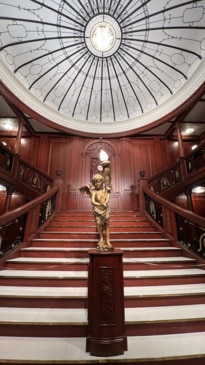
Among the pictures of faces from the early 1900s lining the walls at Melbourne’s new Titanic exhibition, there is one unexpected tribute for a man who only died at sea last year.
Paul Henri ‘PH’ Nargeolet was one of five people who died in the infamous Titan submersible implosion while attempting to view the Titanic wreck in June.
As Australians near the end of the fascinating exhibition at Melbourne Museum, they will discover many of the 200 real artefacts they just viewed were recovered by Mr Nargeolet.
The French explorer, 77, held the record of 37 manned submersible dives to the wreck site and was attempting his 38th dive on the privately owned OceanGate sub when he died.
The sub lost contact with its support ship less than two hours after entering the water and was missing for days before debris was found. There was a huge multinational search that gained intense worldwide interest.
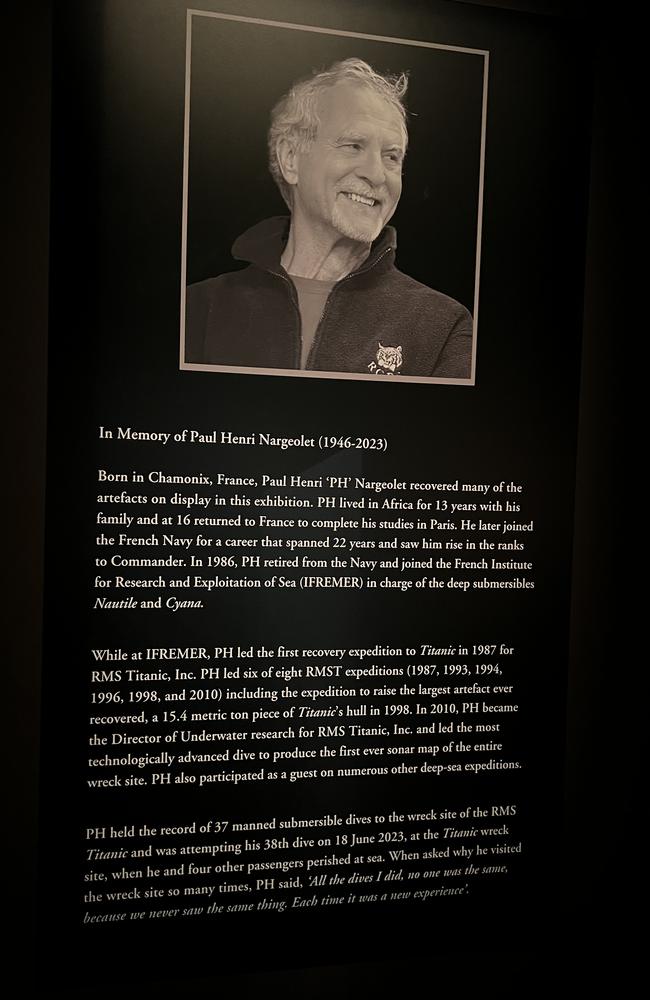
Known as ‘Mr Titanic’, Mr Nargeolet led the first recovery expedition to Titanic back in 1987 and raised the largest artefact ever recovered, a 15,400kg piece of hull, in 1998.
He was the director of underwater research for RMS Titanic, Inc., which is a company that owns the salvage rights to the shipwreck.
“All the dives I did, no one was the same, because we never saw the same thing. Each time was a new experience,” a quote concluding his tribute read.
The Titanic: The Artefact Exhibition paints a detailed picture of what it was like on board the infamous ocean liner before, during and after the tragedy.
What did a ticket cost on the Titanic?
Third class passengers paid $40USD (about $5000 AUD) and they most likely shared a cabin with three other strangers who spoke different languages as many were European migrants heading to America.
Not only was it cramped, the noise and vibrations of the engines could always be heard and felt.
There were only two baths for the more than 700 third class passengers, but bathing was far less frequent than it is now.
While it might sound like a shocking offering for $5,000, most passengers found it more than adequate for the standards of the day.
It was considered impressive the bunks had real mattresses instead of straw.

Meanwhile, the first class cabins were said to rival even the world’s finest hotels.
The cost of a first class ticket varied but on average was more than $2500 USD (about $124,000 AUD today).
The two most luxurious rooms were $4500 USD (about $227,000 AUD today). They included private promenades to enjoy the sea air and exercise.
However, even after spending all that money, if passengers wanted to use the gym, squash court or Turkish bath on board they still had to pay extra.
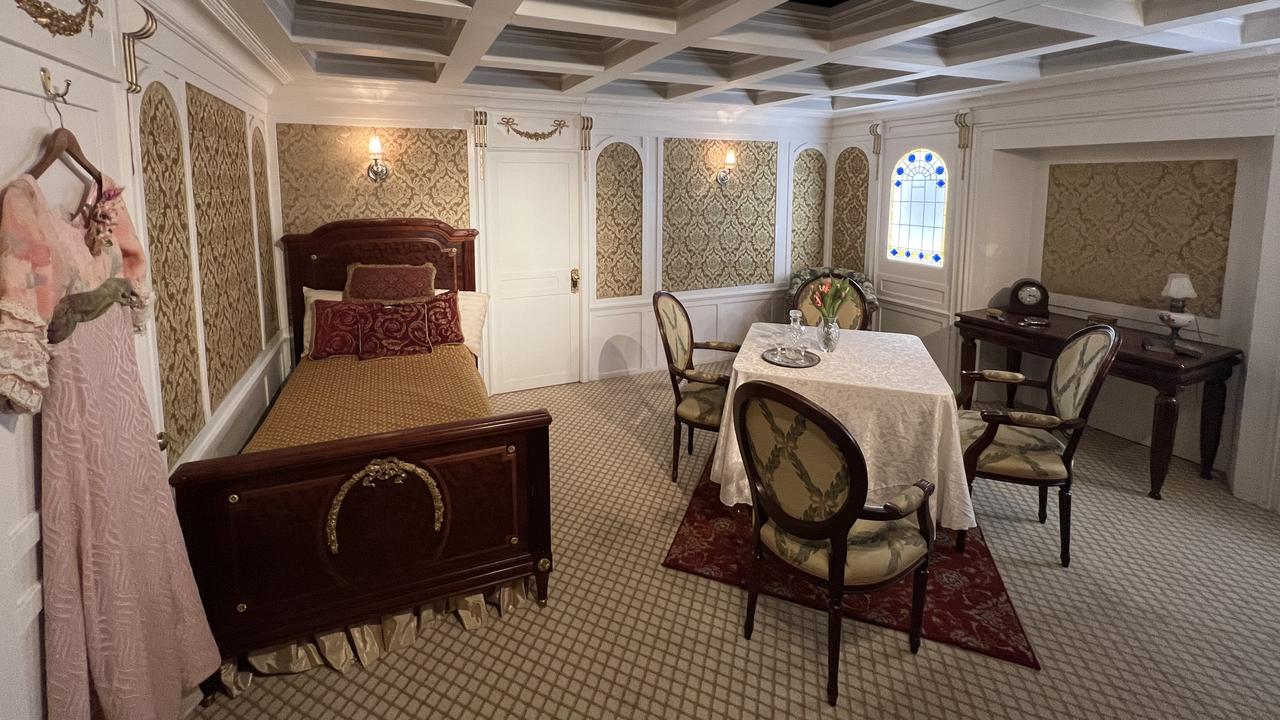
What did Aussies working on Titanic earn?
The exhibition pays tribute to six Australians who were on the Titanic. Four of them were working.
They boarded in the UK, however, for most of them it remains a mystery why they were there.
Donald S Campbell, 28, was born in Geelong, Victoria and was on the victualling crew in food provisions. He earned five pounds (about $743 today) a month and died in the disaster.
Alfred Nichols, 46, was born in Sydney and was a boatswain, which is an officer in charge of the ship’s deck crew, rigging, cable and anchors. He earned eight pounds one shilling (about $1204 today) a month.
Mr Nichols, who was nicknamed ‘Big Neck’, was last seen leading six seamen down to open the lower gangway doors to load lifeboats, but none of the seven men were seen again.
Leonard Lisle Oliver White, 32, was born in Lismore, NSW and worked as first class saloon steward for 3 pounds 15 shillings (about $468 today) a month. He also died in the sinking.
Arthur Gordan McCrae, 32, was born in Adelaide and studied to become an engineer at Sydney University.
He moved overseas and was working in a Siberian copper mine when he got engaged to the mine manager’s daughter.
He was travelling on the Titanic as a second class passenger to Canada to visit some friends but died in the sinking.

It wasn’t only fatal outcomes for Australians on Titanic.
Evelyn Marsden, 28, was born in Dalkey, South Australia and worked as a stewardess and assisted as a nurse for the first class passengers, earning three pounds 10 shillings (about $461 today) a month.
When she was a child she learnt to row a boat on the Murray River while visiting family friends on a farm at Murray Bridge, which ended up providing her the skills she needed to survive.
She survived on Lifeboat 16. Ms Marsden helped care for a baby and navigate the lifeboat with 40 people on board until they were rescued.
She went on to marry a man who also worked for White Star Line and they moved back to Australia, where they died.
Charles ‘Edward’ Dahl, 45, was born in Norway but immigrated to Adelaide to work as a joiner.
He lived there for two decades before he decided to move back to Norway. He stopped in London and decided to make the trip to the US on the Titanic to visit his mother.
He was a third class passenger and was asleep when the ship struck the iceberg. He put on warmer clothing, headed to the Boat Deck and jumped into a lifeboat being loaded into the sea. He was rescued on Lifeboat 15.

The artefacts
Artefacts on display include dinnerware, passengers’ personal belongings and actual pieces of the ship.
It is hard to imagine that the items were on a ship that sank more than 100 years ago.
It is even more baffling they survived with a shipwreck that remained undiscovered for 73 years.
There were 1500 bottles of wine and 20,000 bottles of beer and ale on board the Titanic – four of which are now on display in Melbourne.
In some of the champagne bottles recovered from the wreck, there was still champagne inside.
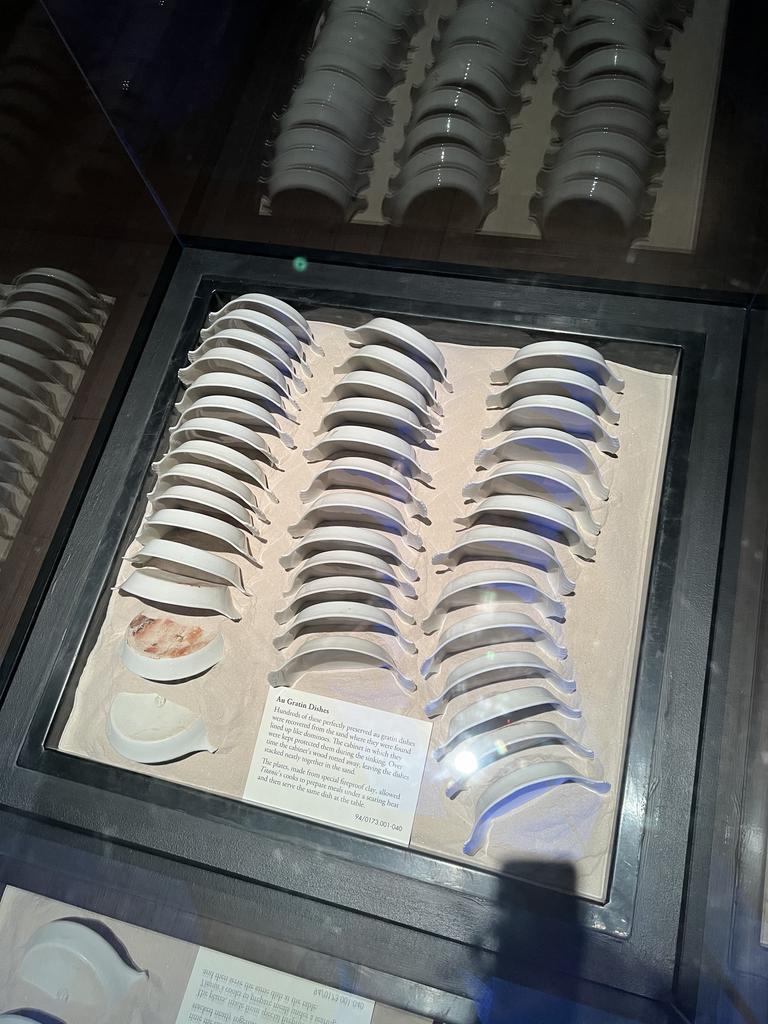

A collection of au gratin baking dishes are also on display, with an incredible story of survival.
They were found stacked like dominoes on the ocean floor. The dishes were made from fireproof clay so they could be used for cooking and then to serve up food at the table.
The cabinet they were in protected the dishes and then rotted away over time, leaving the surprising sight.
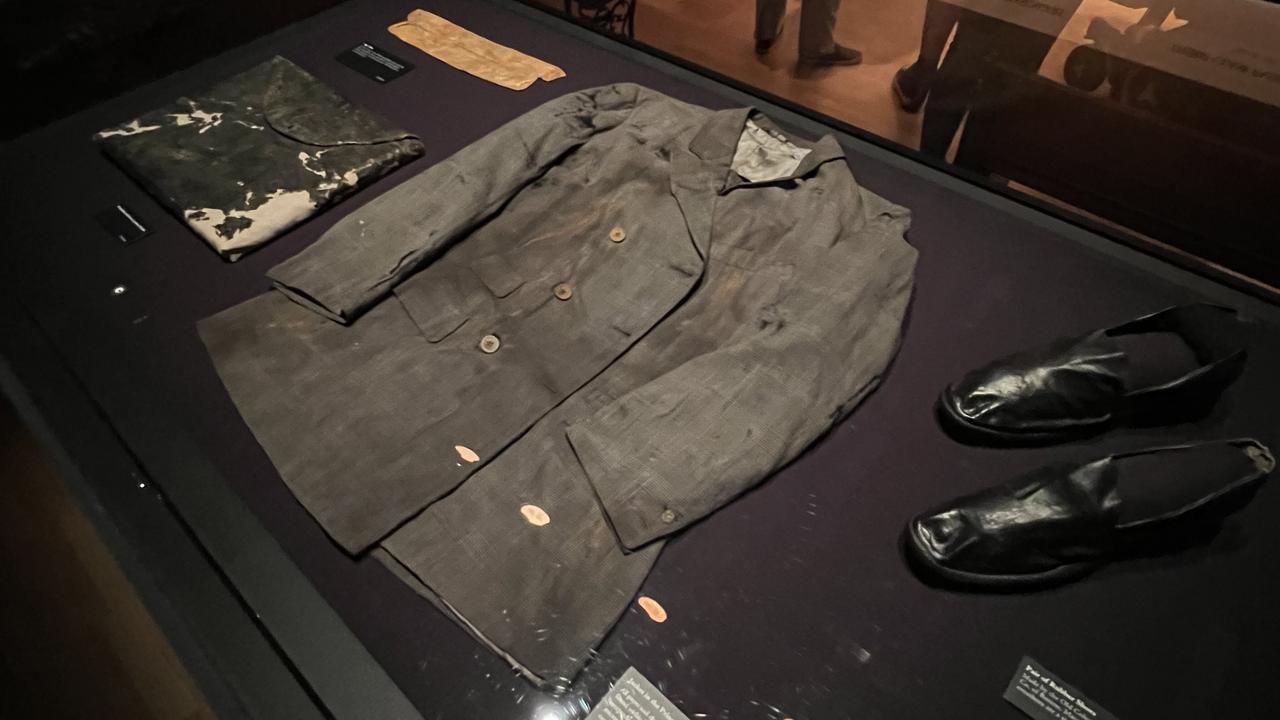
There were even clothes recovered that were found in leather suitcases and bags. The tanning process made leather inedible to microorganisms.
Little bottles of perfume oils belonging to a perfume maker on board were discovered after laying on the ocean floor for 90 years and still had the scent of the natural oils used to blend perfumes.
Titanic: The Artefact Exhibition is on at Melbourne Museum until April 14.






